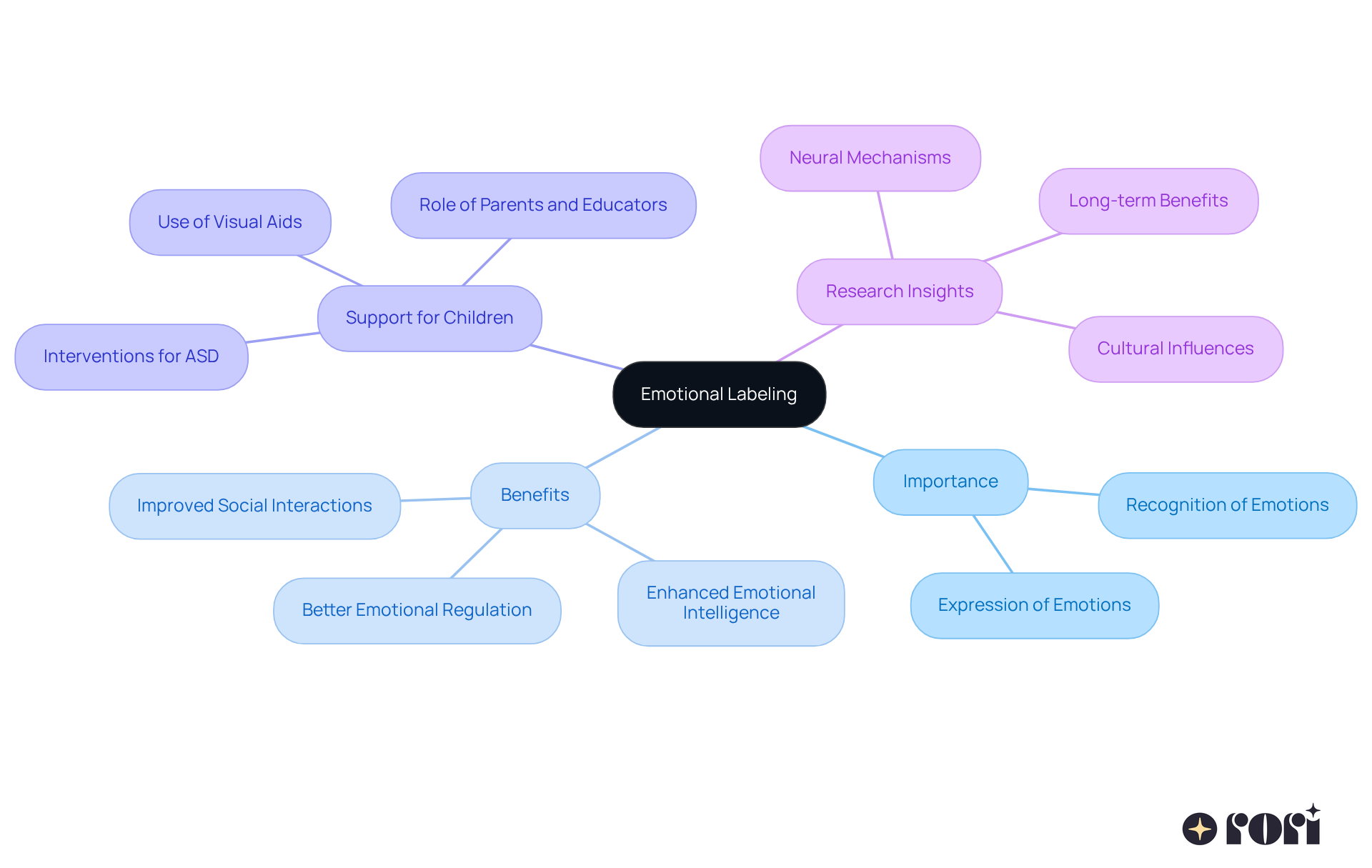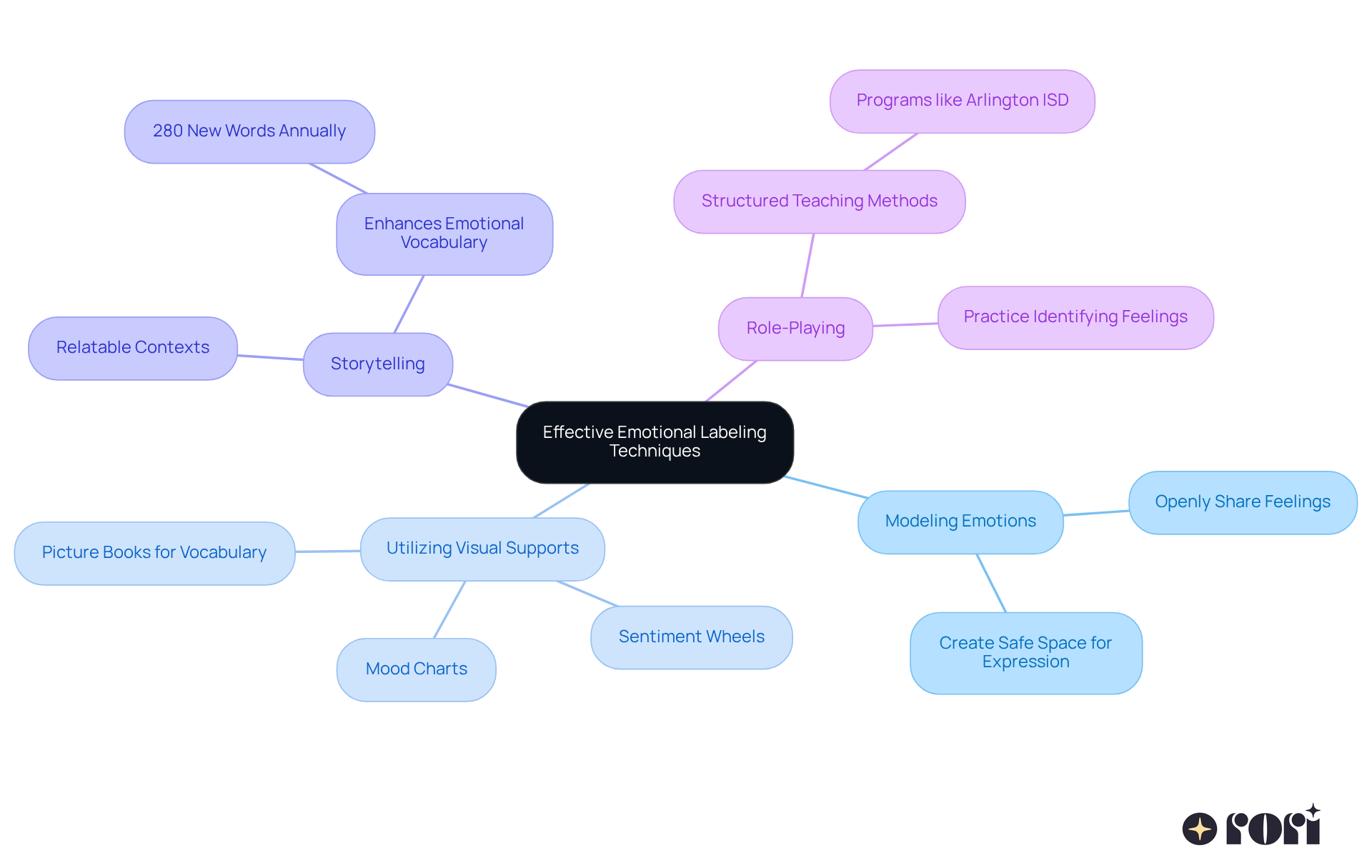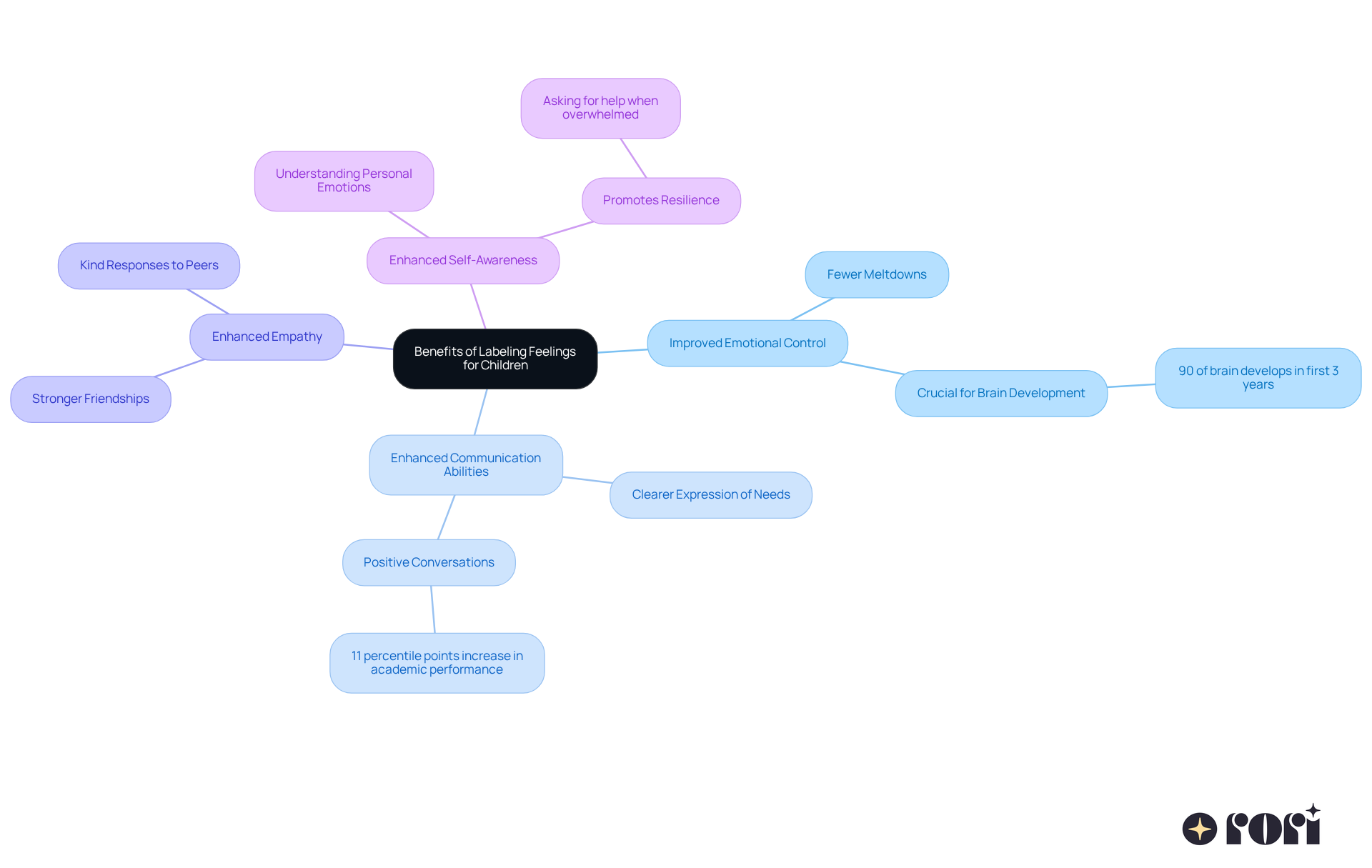Labeling feelings is so important for boosting a child's emotional intelligence, especially for those facing behavioral challenges like Autism Spectrum Disorders (ASD) and ADHD. It really helps them recognize and express their emotions more effectively.
Think about it: when kids can name their feelings, they’re better equipped to communicate what they’re going through. Techniques like modeling emotions, using visual supports, and encouraging storytelling can make a big difference in enhancing their emotional awareness. This leads to improved communication, empathy, and overall mental health.
Let’s explore this together! By sharing personal stories or relatable scenarios, we can connect on a deeper level. For instance, have you ever noticed how a simple visual aid can help your child express themselves? It’s those little moments that can really resonate.
We’re here to help you every step of the way! Remember, fostering emotional intelligence is a journey, and you’re not alone in this. If you have any thoughts or experiences to share, feel free to comment below. Your insights could really help someone else!
Labeling feelings is a vital step in a child's emotional growth, especially for those facing challenges like Autism Spectrum Disorders and ADHD. When kids learn to recognize and express their emotions, it can really boost their emotional intelligence. This, in turn, leads to better social interactions and overall well-being.
But let’s be honest: teaching emotional literacy isn’t always straightforward. How can parents guide their children through the complex world of feelings in a way that builds resilience and understanding? It’s a journey, and you’re not alone in navigating it!
Let’s explore this together! By sharing experiences and strategies, we can help each other foster emotional growth in our kids. After all, every little step counts in building a brighter emotional future for them!
Labeling feelings is all about recognizing and naming emotions as they arise. It’s a vital skill for young people, especially those facing behavioral challenges like Autism Spectrum Disorders (ASD) and ADHD. When kids learn to identify their emotions, they not only understand what they’re feeling but also get better at expressing those feelings. Research shows that young individuals who can pinpoint their emotions tend to manage them more skillfully and respond positively in social situations.
For example, when a child learns to recognize feelings like 'frustration' or 'sadness,' they gain a clearer picture of their emotional landscape. This understanding helps them in labeling feelings and communicate more effectively. This skill is particularly important for kids with autism, who often struggle to identify and express their emotions. By cultivating awareness through labeling feelings, they can significantly enhance their emotional intelligence, which leads to better social interactions and overall well-being. As Dr. Diana Smart points out, kids who understand and manage their emotions are more likely to express them appropriately and bounce back from intense feelings, which is crucial for their growth and mental health.
At Rori Care, we’re dedicated to supporting young individuals with Autism Spectrum Disorders, ADHD, and other behavioral challenges in developing these essential emotional skills. Our clinical leadership team is all about neurodiversity, providing compassionate support tailored to each child’s unique needs. Emotional literacy not only fosters immediate social and academic growth but also lays the groundwork for a resilient, empathetic, and self-aware adult life.
Let’s explore this together! We’re here to help you every step of the way!

To effectively label emotions, parents can use some impactful techniques that really make a difference:
Modeling Emotions: It’s so helpful when parents openly share their own feelings. For instance, saying, ‘I feel joyful because we are spending time together,’ helps kids grasp the concept of emotional expression. This not only involves labeling feelings but also creates a safe space for them to express their own emotions.
Utilizing Visual Supports: Tools like mood charts or sentiment wheels can be fantastic for helping kids visually recognize and categorize their feelings. These aids provide a concrete reference that makes it easier for them to express what they’re feeling. Plus, studies show that picture books can boost kids’ vocabulary related to emotions, which is a great step toward emotional literacy.
Storytelling: Reading books that touch on sensitive themes can really enhance kids’ understanding by providing relatable contexts. When they engage with stories that explore different feelings, they get to see how characters handle their emotions, which enriches their emotional vocabulary. In fact, sharing just one book a day can introduce around 280 new words related to feelings over a year, significantly boosting their language skills!
Role-Playing: Role-play scenarios are a fun way for kids to practice identifying feelings in a supportive environment. For example, acting out a scene where a character feels sad can help them recognize and express that emotion effectively. This approach has been successfully used in programs like the one at Arlington ISD, where pre-K teachers focus on helping students navigate big feelings through structured teaching methods.
These techniques not only expand emotional language but also facilitate labeling feelings, creating valuable opportunities for meaningful conversations about them. Ultimately, this enhances a young person’s emotional intelligence and resilience. Remember, ‘It’s never too early or too late to start teaching kids about emotions,’ so let’s explore this together!

Labeling feelings provides numerous benefits for kids, and it's definitely worth exploring together! 😊
Improved Emotional Control: When children can pinpoint their feelings, they’re much better at managing them. This means fewer meltdowns! Research shows that the emotions kids experience early on can shape their brain development. In fact, about ninety percent of the brain develops in those first three years, a time when it’s super adaptable. So, teaching kids about labeling feelings early on is crucial.
Enhanced Communication Abilities: When kids learn to express their emotions, they can share their needs and frustrations more clearly. This leads to better interactions with friends and adults alike. Kids who understand their feelings are more likely to engage in positive conversations. A study of 213 programs found that social and emotional learning boosted students’ academic performance by 11 percentile points. That’s a big deal!
Enhanced Empathy: Understanding their own feelings helps kids connect with others’ emotions. This emotional awareness fosters stronger friendships, as they learn to respond to their peers with kindness and understanding.
Enhanced Self-Awareness: As kids practice identifying their emotions, they gain a deeper understanding of themselves. This is key for personal growth and resilience. For instance, if a child feels 'overwhelmed,' they might ask for help or take a break instead of getting frustrated.
As Donna K. Housman wisely says, "To build this foundation for social and academic success, young individuals need to develop interpersonal skills." Research shows that kids who engage in labeling feelings not only gain better emotional control but also improve their communication skills, leading to better social and academic outcomes. This foundational skill set is vital for nurturing social awareness and supporting lifelong mental health.
Now, let’s chat about some common misconceptions around labeling feelings. Some folks think that just naming emotions will solve everything. But really, emotional labeling should be part of a broader approach that teaches kids how to manage and express their feelings appropriately.
So, let’s explore this together! If you have thoughts or experiences to share, I’d love to hear them! We’re here to help you every step of the way!

To help parents nurture emotional intelligence in their kids, here are some friendly strategies to consider:
Create a Safe Space: It’s so important to set up an environment where kids can talk about their feelings without fear of judgment. When they feel secure, they’re more likely to open up. For instance, a classroom that focused on psychological safety saw students participating more and sharing their thoughts freely. Isn’t it amazing how a supportive space can make such a difference?
Practice Active Listening: When your little ones share their emotions, really listen and acknowledge what they’re feeling. Saying things like, "It’s okay to feel sad sometimes," validates their emotions and helps them understand their feelings better. Research shows that kids who feel heard are more likely to develop healthy emotional regulation skills.
Encourage Emotional Exploration: Give your kids opportunities to explore their feelings through creative outlets like art, music, or play. This can help them express emotions they might not have the words for yet, deepening their connections. A study found that kids involved in expressive arts showed improved emotional awareness and communication skills. How cool is that?
Be consistent: Make it a habit to engage in labeling feelings during daily routines, such as at mealtime or bedtime. Consistently discussing labeling feelings reinforces their importance and helps kids recognize and express their emotions more effectively. Schools that have woven social learning into their programs report noticeable improvements in students’ social interactions and overall well-being.
By engaging in these practices, parents can significantly enhance their children’s emotional intelligence, leading to better social interactions and overall happiness. Plus, caregiver training in ABA principles equips parents with the knowledge and skills to support their kids’ emotional growth effectively. This training empowers caregivers to make informed choices, resulting in better behavioral outcomes and a more nurturing family environment.
However, it’s essential to be aware of common pitfalls, like dismissing kids’ feelings or not showing emotional expression ourselves. By tackling these challenges, parents can create a more supportive atmosphere for their children’s emotional development. Let’s explore this together! We’re here to help you every step of the way!

Labeling feelings is such a powerful practice! It gives kids the tools they need to really understand and express their emotions. When parents help foster emotional literacy, it’s like handing their children a map to navigate their emotional landscapes. This not only improves social interactions but also boosts overall well-being. Plus, it sets the stage for a more resilient and self-aware adult life.
Throughout this article, we’ve explored various strategies for effective emotional labeling. From modeling emotions to using visual supports, storytelling, and role-playing, these methods empower kids to articulate their feelings and develop empathy. The benefits are truly remarkable! Enhanced emotional control, better communication, and greater self-awareness all lead to improved social and academic outcomes.
Ultimately, fostering emotional intelligence in children is a journey we take together. It requires patience and commitment, but it’s so worth it! By creating safe spaces for emotional exploration and having regular chats about feelings, parents can significantly boost their children’s emotional development. Embracing these practices not only enriches kids' lives but also prepares them for a future filled with empathy, understanding, and meaningful relationships.
So, let’s explore this together! Remember, you’re not alone on this journey. We’re here to help you every step of the way!
What is emotional labeling?
Emotional labeling is the process of recognizing and naming emotions as they arise. It helps individuals, particularly young people, understand and express their feelings more effectively.
Why is emotional labeling important for young people?
It is crucial for young people, especially those facing behavioral challenges like Autism Spectrum Disorders (ASD) and ADHD, as it enhances their ability to identify and manage emotions, leading to improved social interactions and overall well-being.
How does emotional labeling benefit children with Autism Spectrum Disorders and ADHD?
Children with ASD and ADHD often struggle to identify and express their emotions. By learning to label their feelings, they can better understand their emotional landscape, communicate effectively, and manage their emotions more skillfully.
What impact does understanding emotions have on children's social skills?
Children who can identify and manage their emotions are more likely to express them appropriately and respond positively in social situations, which fosters better social interactions.
How does Rori Care support emotional development in young individuals?
Rori Care provides compassionate support tailored to the unique needs of young individuals with Autism Spectrum Disorders, ADHD, and other behavioral challenges, helping them develop essential emotional skills.
What long-term benefits does emotional literacy provide?
Emotional literacy fosters immediate social and academic growth and lays the groundwork for a resilient, empathetic, and self-aware adult life.